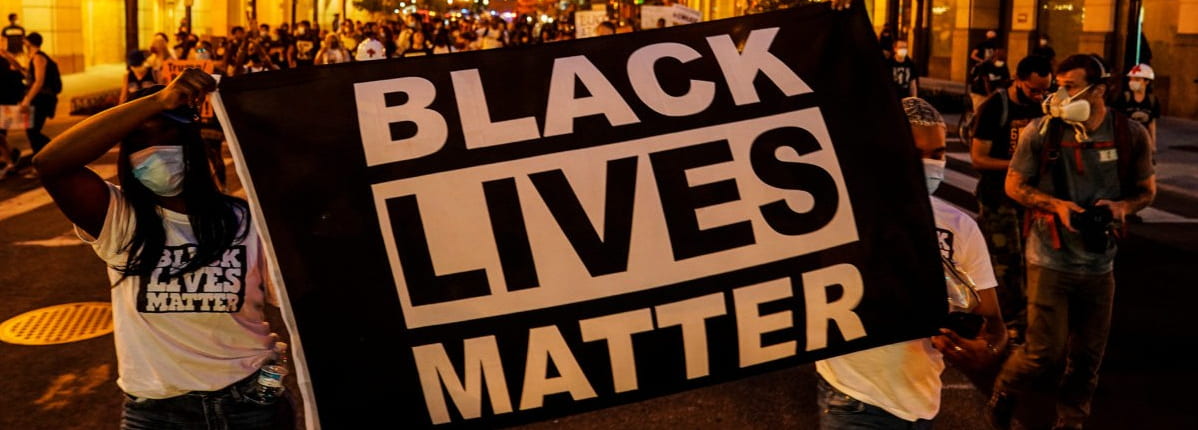Camellia Baki
News Editor
In June of 2020, it took eight minutes to reignite a movement that would cause millions of Americans to take to the streets, demanding change. The man at the center of it all, George Floyd, had his death caught on film after his neck was knelt on by Minneapolis police officer Derek Chauvin for eight minutes.
Over eight months later, many activists feel as if there has been no justice for George Floyd and many other victims of police brutality.
Black Lives Matter (BLM) was created in 2013 by Alicia Garza, Patrisse Cullors and Opal Tometi following the acquittal of George Zimmerman, who murdered 17-year-old Trayvon Martin in 2012.
The movement forced the public to come face-to-face with the forgotten victims of racial and police brutality, including that of Eric Garner, Michael Brown and Philando Castile.
“You just killed my boyfriend,” uttered Diamond Reynolds, after Officer Jeronimo Yanez shot Philando Castile five times, while her four-year-old daughter watched in the back of the car. Reynolds live streamed the event to Facebook, allowing the haunting last moments of Castile’s life to be broadcast around the world.
Some of these high-profile cases even involved children, such as that of 12-year-old Tamir Rice, who was executed in a park for playing with a toy gun. The two officers responsible have faced no criminal repercussions, with the Justice Department recently deciding they will not pursue criminal charges. This case is reminiscent of the lynching of Emmett Till, a 14-year-old child executed in 1955 by two white men who were later acquitted.
Over five years after the deaths of Castile and Rice, it appears police brutality has not slowed. In 2020 alone, over 1116 people were killed by police, with over 28 percent being black. The World Population Review finds that U.S. police disproportionately kill more civilians than any other comparable developed country.
“It’s, again, a reminder that police officers can’t continue to be judge, jury and executioner,” said Minnesotan representative Ilhan Omar. Last year saw public approval of BLM rise to over 67 pervent, according to Pew Research Center. These numbers are reflected in turnout at events, as recent BLM demonstrations have been some of the largest organized protests in U.S. history. Civis Analytics estimates that between 15 million and 26 million people participated in protests across the country.
Along with Floyd’s murder, protests have focused on other high-profile cases such as that of Breonna Taylor and Ahmaud Arbery. Opposers to the movement have tried to cast a shadow by highlighting the supposed widespread violence of protestors. However, 93 percent of the protests have been reported to be peaceful, according to the US Crisis Monitor, with many violent encounters being incited by the police. Forensic Architecture has been collecting and studying thousands of incidents of police brutality at BLM protests.
Since June, fewer people have been taking to the streets, but the movement is not dead. Protests have brought about many municipal and national changes. Cities like Los Angeles are reallocating millions in funding from their police department to other areas that directly benefit citizens.
There have also been laws put in place that limit police brutalization and unnecessary force, such as the restriction of chokeholds and Breonna’s Law, banning forms of “no-knock” warrants.
Many have called for the institution of reforms that mirror other successful criminal justice systems around the world.
Nordic countries have smaller police forces with less allocated funding, yet they still have some of the lowest crime rates in the world.
The U.S.’s murder rate more than triples that of these nations. Crimes are also solved more, as murder in Sweden will result in an arrest 83 percent of the time, while in the U.S. that number is only 62 percent. These countries attribute their low crime rates and police success to expanded access to education and generous welfare programs that decrease inequality across the board.
Many are determined to keep fighting until there is wholescale criminal justice reform, with many BLM activists bringing light to the systemic issues in place that were highlighted in the recent execution of Brandon Bernard, that sees that black offenders are more likely to be given harsher sentences than their white counterparts.
Until true justice and equality are achieved within the U.S. criminal justice system, it appears Black Lives Matter will not be going anywhere anytime soon.
